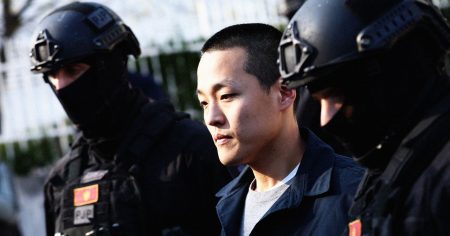Charles is managing partner of The Lew Firm, Attorney and Entrepreneur who owns and operates multiple hospitality concepts.
“Reluctant to change” would be an understatement for broad characterizations of law practice. Since Hammurabi’s codified law, the rule of law has largely been set in stone. This consistency historically served a purpose. It acts as a societal bedrock, defining behavior boundaries and consequences for misdeeds. For the citizenry to maintain faith in the legal system, the law should be predictable, durable and consistently impartial.
A shifting legal framework can sow disorder, making it challenging for individuals to understand their rights and moral obligations. Such predictability, stemming from the law’s gradual evolution, fosters adherence. A thoughtful approach to legal changes maintains public faith, ensuring societal cohesion and modern stability.
Technology In The Legal Sector
Ten years ago, it would have been difficult to conceive of any genuinely disruptive technology in the legal sector. There were, of course, incredibly versatile CRMs, web-based research platforms and digital data and analytics companies, but these were often just an automation of pre-existing systems.
Suppose in 2013, a lawyer had attempted to promote the use of AI in legal practice; this proposition would have had little to no substantive real-world examples to illustrate any credible utilization of the technology.
In 2018, the legal industry was exposed to the undeniable reality of AI’s infiltration. LawGeex’s AI program squared off against 20 “highly-experienced, U.S.-trained” human lawyers in a document review battle royale. The expediency of the AI was not a surprise, completing the assigned review of five real-world NDAs in 26 seconds as opposed to the (understandable) 92 minutes for its human opponents.
What was more intriguing was the AI’s 94% accuracy, while 20 highly-experienced human lawyers scored an 85% average. This outcome signifies AI’s ascendancy over conventional human processes, marking the advent of a transformative period in the legal realm.
Human Skills
Despite AI’s apparent victory, people were quick to point out that however impressive this might be, the designated task was highly specific, required no creativity or legal finesse, and favored the brute computing power of the AI. An array of criticism was leveled at the proponents of AI, arguing that it would never possess emotional intelligence or empathy, be capable of critical thinking or excel in conflict resolution and negotiation.
These arguments are quickly reduced to generic platitudes when one considers AI’s unique strengths that enable it to compete in such areas. As large language models (LLMs) like ChatGPT continue their impressive trajectory, I think developing a digital form of empathy is an inevitability.
While AI may not think creatively in the human sense or possess our most traditional definition of critical problem solving, language models instantly identify patterns and apply the logic from a prodigious amount of data. AI can then devise innovative solutions to complex problems, conflicts and disputes that may be beyond the capabilities of a typical human lawyer whose personal experiences and biases may restrict their perspective.
Studies illustrate a willingness to incorporate AI in dispute resolution and, in certain instances, a preference even. At the bare minimum, AI can provide a cost-effective, impartial analysis of a problem and assist human counterparts in creating a myriad of solutions.
The Necessity Of The Human Touch
The mastery of LLMs in data interpretation is undeniable, but suggesting that human lawyers are obsolete may be oversimplified. Law is not just about understanding written codes; it is about interpretation, application of unique human experiences, ethical considerations and the intangible art of persuasion.
Machines, despite their computational might, cannot fully emulate these skills. Nevertheless, combining AI’s computational strength with human insight crafts a formidable partnership: enter the legal prompt engineer (LPE).
Legal Prompt Engineers
The LPE’s primary role is to utilize AI, particularly LLMs, to enhance time-intensive legal tasks, transforming traditional legal workflows. Engineers in this capacity might not be legal experts, but they excel in framing precise questions for these models, drawing out answers that align with legal nuances. Essentially, these experts represent a significant paradigm shift, evolving the role of legal practitioners.
In legal research, an LPE harnesses advanced models to improve comprehension. Specific legal texts, statutes or summaries fed into the AI yield clarifications, contextual insights or succinct summaries. This assists legal professionals in quickly grasping the implications of texts, streamlining the research process.
In legal drafting, AI can suggest relevant clauses, pinpoint angles of an argument and provide recommendations to enhance clarity. It ensures consistency in terminology and references, detects redundant language and verifies the accuracy of legal citations. It flags potential high-risk language, aligns with jurisdictional norms and prioritizes relevance through contextual analysis. The system checks coherence in stipulated timelines and identifies potentially biased or non-inclusive language.
For training and brainstorming, LPEs can present hypothetical situations, formulating questions that unearth potential legal arguments or implications. Not only does it serve as an instructional tool for budding legal professionals, it also exercises a fresh perspective for seasoned attorneys.
Shifting Focus
This synergy allows human professionals to focus on more intricate legal nuances, strategy formation, client interactions and tasks requiring personal touch. Despite the cyber-enhanced capabilities of LPEs, I think the credentialed attorney will remain the ultimate gatekeeper, ensuring that every piece of work upholds the highest standards of legal rigor and accuracy.
By having a seasoned attorney as the last set of eyes on any deliverable, clients can rest assured that the prowess and power of technology are audited continuously by human judgment.
The comprehensive integration of AI in the legal domain is not an apocalypse for traditional lawyers but an evolution. Legal prompt engineers represent the fusion of tried-and-true legal traditions and future technology.
In the ever-evolving legal landscape, continued learning is of paramount importance. Nothing in the past two decades could prepare the legal sector for the cataclysmic shifts brought about recently. Adapting to new technologies, legal paradigms and client expectations ensures that seasoned lawyers remain relevant and effective in delivering exemplary legal services.
As we confront increasingly intricate challenges, it is evident that more than time-tested methods are required. In the groundbreaking union of human and AI lawyering, I think we are heralding a new era where innovation and tradition collaborate to ensure that the scales of justice remain balanced but with greater efficiency, accuracy and potential than ever before.
Forbes Business Council is the foremost growth and networking organization for business owners and leaders. Do I qualify?
Read the full article here










